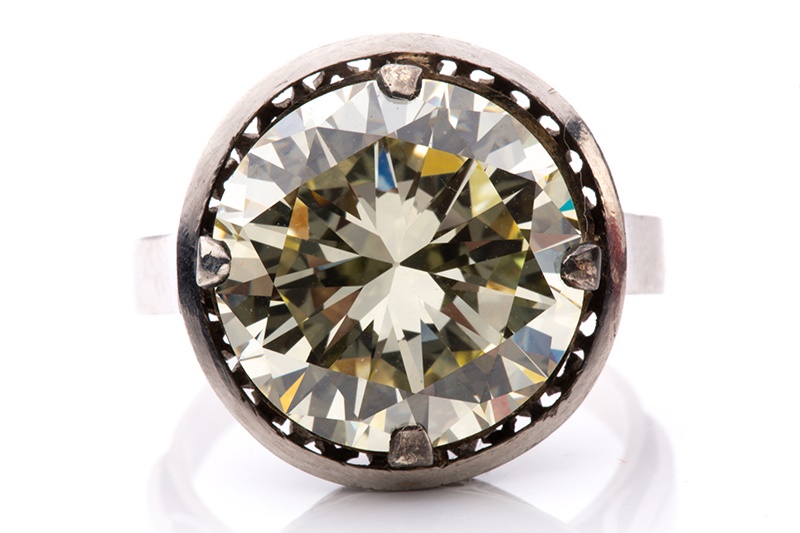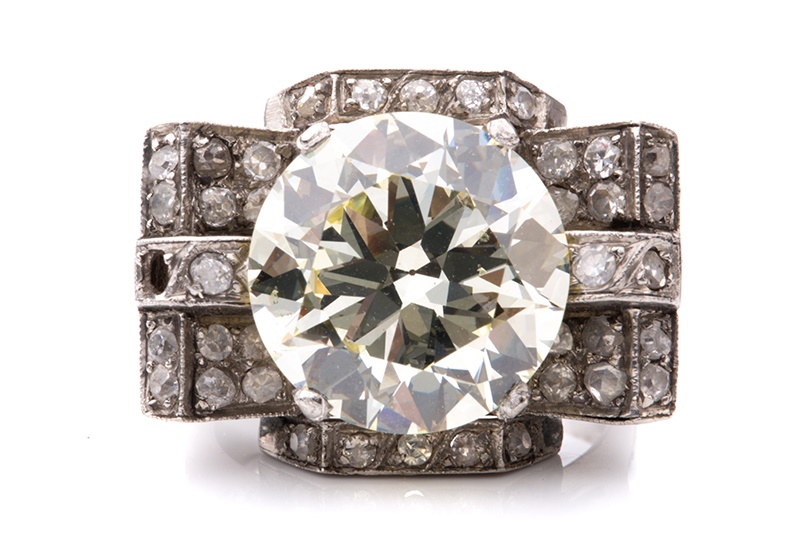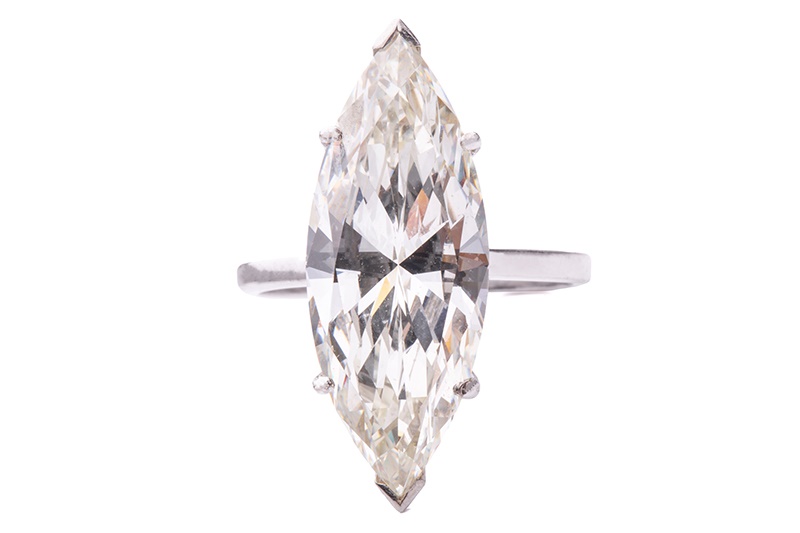How to Tell if a Diamond is Good Quality
The quality of a diamond can vary greatly and is determined by the 4Cs
09/01/2025
Diamonds symbolise movie star glamour, luxury and strength. They are the most popular stone for engagement rings and are associated with romance, in large part, thanks to the huge success of the 1947 DeBeers campaign ‘a diamond is forever’. It is also the birthstone for people born in April.
However beautiful these brilliant, sparkling stones are, all diamonds are not equal. The quality of a diamond can vary greatly and is determined by the 4Cs (Cut, Carat Weight, Clarity and Colour), the universal method for assessing and certifying diamonds since 1940.
A diamond solitaire ring, featuring a light yellow round brilliant-cut diamond of 8.62ct
Perhaps the most objective of the Cs is that of Carat, or weight. The larger the diamond, the more desirable it is, whilst prices can also jump by many tens of thousands of US Dollars per carat for the same size diamond, depending on its colour and clarity. However, it is interesting to note that some markets will place value on carat weight over colour and clarity (mainly the American market) whilst others prefer colour and clarity.
At this point, it is important to differentiate between natural diamonds and their lab grown counterparts. Lab grown diamonds are regarded by some (especially younger buyers) as an ‘ethical’ and more affordable alternative to natural diamonds. However, by the majority, they are regarded as less desirable, commanding prices of at least 40-50% less than natural diamonds. Interestingly, the physical and chemical characteristics of lab diamonds are almost identical to natural ones.
Almost all diamonds will have inclusions (internal faults) and blemishes (external faults) which, although invisible to the naked eye, can affect light reflection and ‘sparkle’. The fewer inclusions and blemishes, the higher quality of the diamond.
For white diamonds, the closer to colourless (D grade) the more valuable they are, although this does not hold true for fancy colour diamonds where the quality increases with the strength and purity of colour. A little known fact is that diamonds come in all colours, from green, purple and orange to the rare, and very valuable, pink and blue.
To properly determine the quality of a large diamond it would need to be certified, and it is very important that your diamond is certified by a reputable laboratory. For example, even under magnification, it is extremely difficult for gemmologists to distinguish man-made from mined diamonds without specialized equipment. Here, at Dawsons, we ensure that larger diamonds are always certified by the internationally renowned DeBeers Institute of Diamonds.
A large diamond solitaire ring, featuring a marquise-cut diamond of 7.09ct
Once the quality of a diamond is certified, the value can be determined using diamond trading network intelligence such as the RapNet Price List, a daily updated list of average and best asking prices based on diamonds currently for sale, and the Rapaport Weekly Market Comment, a global round-up of the diamond market and its variances.
Our highly skilled team of experts in the Dawsons’ Jewellery department can help you with the certification and subsequent valuation of your diamond to ensure that consistency and accuracy informed by global markets is used across our estimate ranges.
read more
Are Solitaire Diamonds Worth More?
How Do I Sell a Large Diamond?
How to Tell if a Diamond is Real

Nicky Houston
Our Head of Department - Jewellery, Silver & Watches... Nicky is a highly respected Auctioneer & Valuer, who had dreams of becoming an artist. Whilst she may not have made it as a successful artist herself, Nicky has helped many a customer to successfully sell and buy beautiful pieces of jewellery and works of art over her many years working within the auction industry.
Jewellery Silver & Objects of Virtue Watches
Are you considering selling a large diamond?
Dawsons can access a global audience of more than 10 million known bidders, and secure the best price.
Contact an expert Jewellery Valuer today for confidential sales advice, we would be delighted to help:


